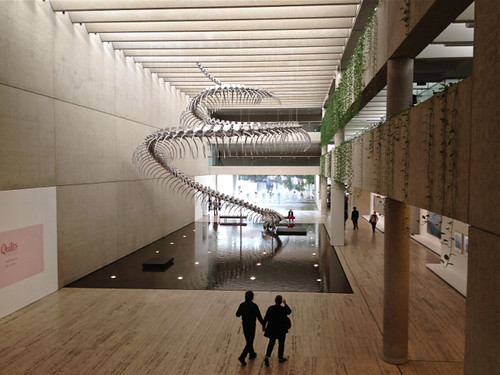
The ever-interesting Queensland Art Gallery currently has an exhibition of English quilts on loan from the Victoria and Albert Museum. The quilts date from around 1700 to 1945 and include examples of patchwork, applique, embroidery, inlay applique and quilting. The exhibition focuses on the social context of the quilts and quilt-making, rather than on techniques of construction or elegance of design. Nevertheless, many of the quilts are visually pleasing, and you can't help but marvel at the skill and patience of those - mostly women - who made them.
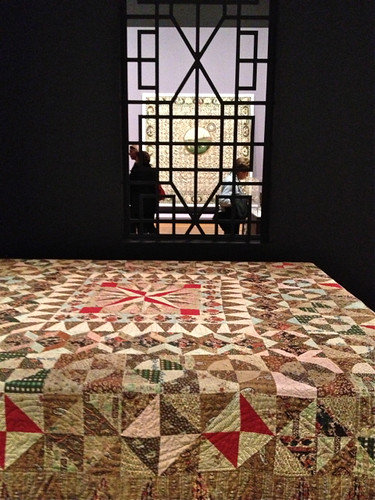
The earliest quilts are elaborate - often made from silk or velvet fabrics, or printed cottons brought back from India. They were commissioned by or constructed within wealthy households and were often associated with significant events such as births or marriages, or were gifts to patrons. The example below is reputed to have been made for the marriage of Mary Parker in 1770, though most of the silks used for the patches are ribbons dating from 1720 to 1740. Fabrics were precious and hoarded. Quilts were often re-patched, or parts of a quilt were recycled into another. The patchwork quilts from this time use the 'English' method of construction with each patch shaped around a paper template. As paper was also precious, the templates were constructed from recycled newspapers, pamphlets, records of household accounts and letters and consequently are useful in dating the quilts and setting them in their social context.
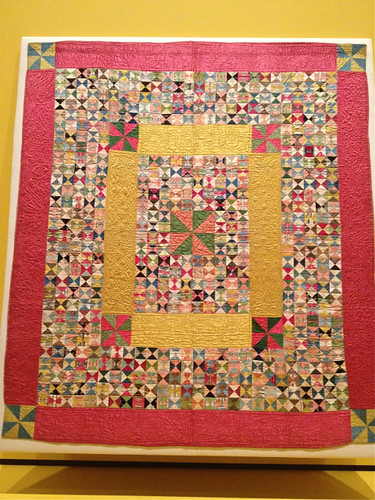
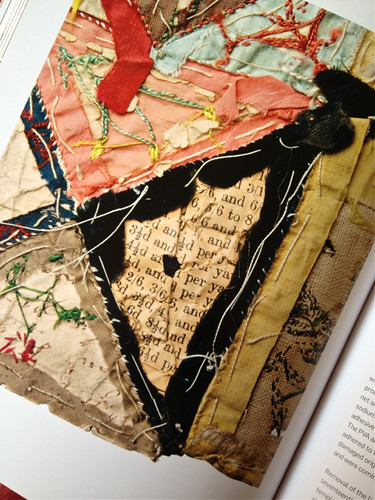
With the industrial revolution in the nineteenth century fabrics became cheaper and more readily available and quilt-making was no longer the province only of the wealthy. I was particularly taken by the curator's comments about the Victorian belief in the improving quality of patchwork and quilting - for example, the patience, diligence and skill required to make the quilts was seen as an appropriate reforming activity for female convicts. As well as the borrowings from the Victoria and Albert Museum, the exhibition includes the amazing, huge 'Rajah' quilt from the collection of the National Gallery of Australia that was made by women convicts being transported from Britain to Australia on the ship 'Rajah' in 1847. Patchwork, quilting and embroidery were also promoted as desirable activities to divert soldiers from drinking and other undesirable activities during the inevitable downtime of lengthy postings abroad. The geometrically complex and sophisticated quilt on the left below is one such quilt; constructed by a soldier or soldiers from tiny one and a half centimetre hexagons of uniform fabrics while in India around 1870.
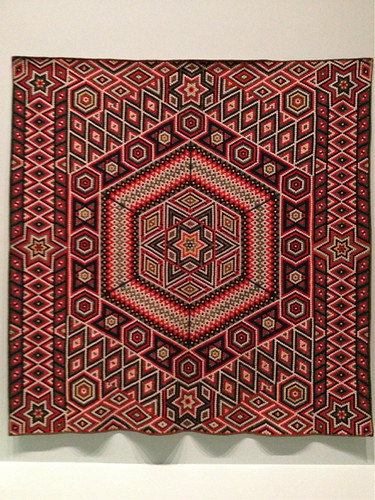
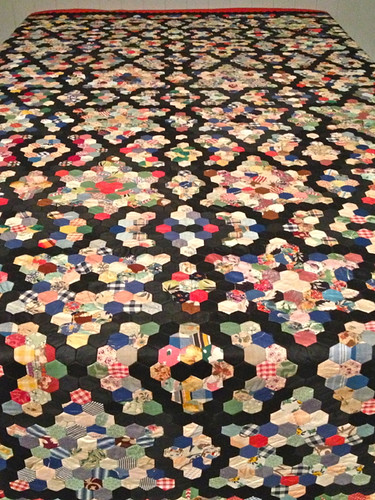
The twentieth century quilts are, on the whole, more everyday and pragmatic, often made from scraps of fabric recycled from clothing or old curtains or furniture fabrics. The right hand quilt above, in a complex pattern of hexagons, was made in the immediate post-war period from the black-out curtains used during the war, together with fabric scraps scrounged from used clothing.
The most poignant cloth in the exhibition is incomplete. The simple hexagonal design was made by girl guides who were part of a group of British civilians imprisoned in Changi prison in Singapore during the second world war. They were making the quilt for their troupe leader when it was discovered and confiscated by the guards. You can only begin to imagine the sacrifices that must have been made to find both the materials and the time to sew the cover.
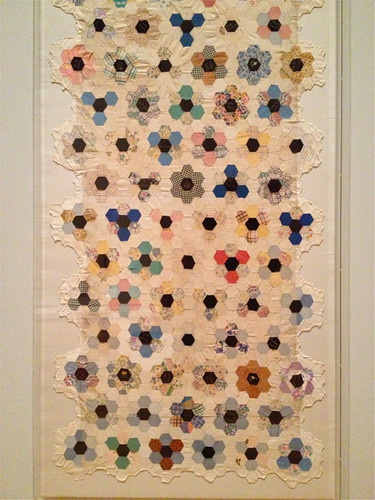
In a week when our now (sadly) former Prime Minister was being denigrated in some quarters for the supposedly frivolous and pointless pastime of knitting it was ironic to see both the popularity of this exhibition of traditional, mainly feminine crafts, and the serious and well-researched approach taken by the curators.
4 comments:
Oh Lyn, that Changi quilt is so sad. I am amazed that it survived the war, but how fortunate it did.
It looks like an amazing exhibition, and I love how they have let you see some of the construction.
I am also very disappointed in the denigration of "feminine" pursuits that has taken place this week.
the historian in me is very drawn to quilts, and these looks fascinating, they really do tell a myriad of powerful stories. i dont have the soft touch for hand sewing, but i am drawn to making one in that way just for the quiet patience of it. the rhetoric around knitting this week, to have someone even call it unfeminist, is just so depressing, i dont even know where to start.
Thanks Lynn, I was at the exhibition today, thoroughly enjoyed it and you have illustrated the pieces I thought were the highlights too. I was particularly taken by the military quilts. A very timely reminder of the non gendered and therapeutic side of handwork I thought. I thought they had a terrific collection of textile craft books in the shop too. Dd you succumb?
Post a Comment